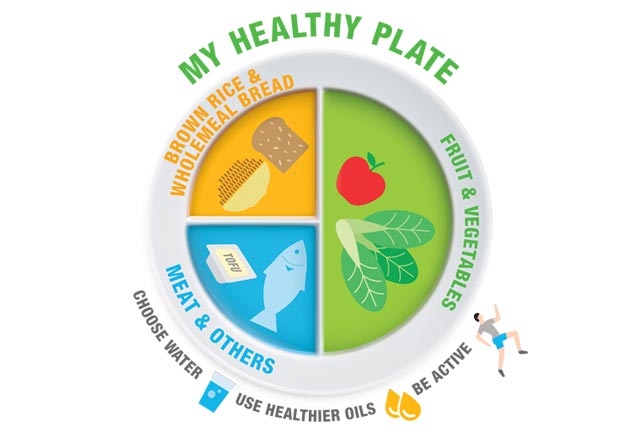No More Food Pyramid
The Food Pyramid which represented what a healthy diet should look like for over 2 decades has been replaced by the Food Plate.
The original pyramid, which was released in the early 1990's, was made up of 4 food groups stacked up in the shape of a pyramid. The widest part of the pyramid consisted of carbohydrates (breads, cereals and grains), and the narrowest top part was occupied by fats. However, despite the 20 something years of public education based on this pyramid diet, many have found it just too complicated to understand. Rising obesity and diabetes rates do not testify to a dietary plan that is working.
People have long complained about the food pyramid, "Good theory. But how does that translate into what I put on my plate?"
And so the new Food Plate has been designed to do just this. It is a simple, powerful visual aid to help people decide what to put on their plate at each meal. Almost everybody uses a plate, so it is easy to identify with. This means that young kids can learn the message and carry on with the good dietary habits throughout their lives.
The main message should be that half your plate should be made up of vegetables and fruits. Portion size, even of healthy foods, plays a major role in weight management and reducing chronic diseases such as diabetes, hypercholesterolaemia and hypertension. Research has consistently shown that using a smaller plate can help reduce the total calories consumed in a meal.
My Healthy Plate:

Fill 1/2 your plate with Fruit & Vegetable
Fruit and vetables are naturally low in saturated and trans fat, rich in dietary fibre, vitamins and minerals. They help lower your risk of heart disease, stroke and certain cancers.
Prepare by stir-frying, sautéing, roasting, steaming or prepare them in soups. Have whole fruit rather than as juices.
Fill 1/4 your plate with Whole-Grains
Whole-grains such as brown rice, wholemeal bread and rolled oats contain vitamins, minerals, phytochemicals and fibre. They also have a lower Glycaemic Index compared to refined carbohydrates (eg. white bread and white rice). Thus choosing whole-grains over whites better controls diabetes and reduces your risk of heart disease. Whole-grains also helps you feel full longer, as they are more slowly digested. This helps with weight management.
Fill 1/4 your plate with Protein
This category includes poultry (e.g. chicken, duck and turkey), meats (e.g. beef, mutton and pork), seafood, eggs, nuts, bean products and low-fat dairy products.
Other Eating Tips:
1. Adequate Calcium
Milk, yogurt, and cheese are rich natural sources of calcium. Nondairy sources include vegetables, such as Chinese cabbage, kale, and broccoli. Spinach provides calcium, but its bioavailability is poor. Most grains do not have high amounts of calcium unless they are fortified. Pick low-fat options whenever possible in order to maintain a healthy weight.
Calcium is important for the maintenance of strong bones and teeth. It also helps prevent the development of osteoporosis.
2. Use Healthier Oils
Select healthier unsaturated fats and oils (such as canola oil, soybean oil or olive oil), while limiting saturated and trans fat intake. Remember that even healthier oils should be consumed in moderation.
3. Choose Water over Sweetened Drinks
Water is best. Make water your drink of choice. Sweetened drinks generally contain empty-calories which can lead to weight gain.
4. Be Active
Exercise is one of the most important parts of keeping your body at a healthy weight and should complement any diet plan. Exercise helps people lose weight and lower the risk of disease such as diabetes, hypertension and heart disease.
Further Reading
The article above is meant to provide general information and does not replace a doctor's consultation.
Please see your doctor for professional advice.
